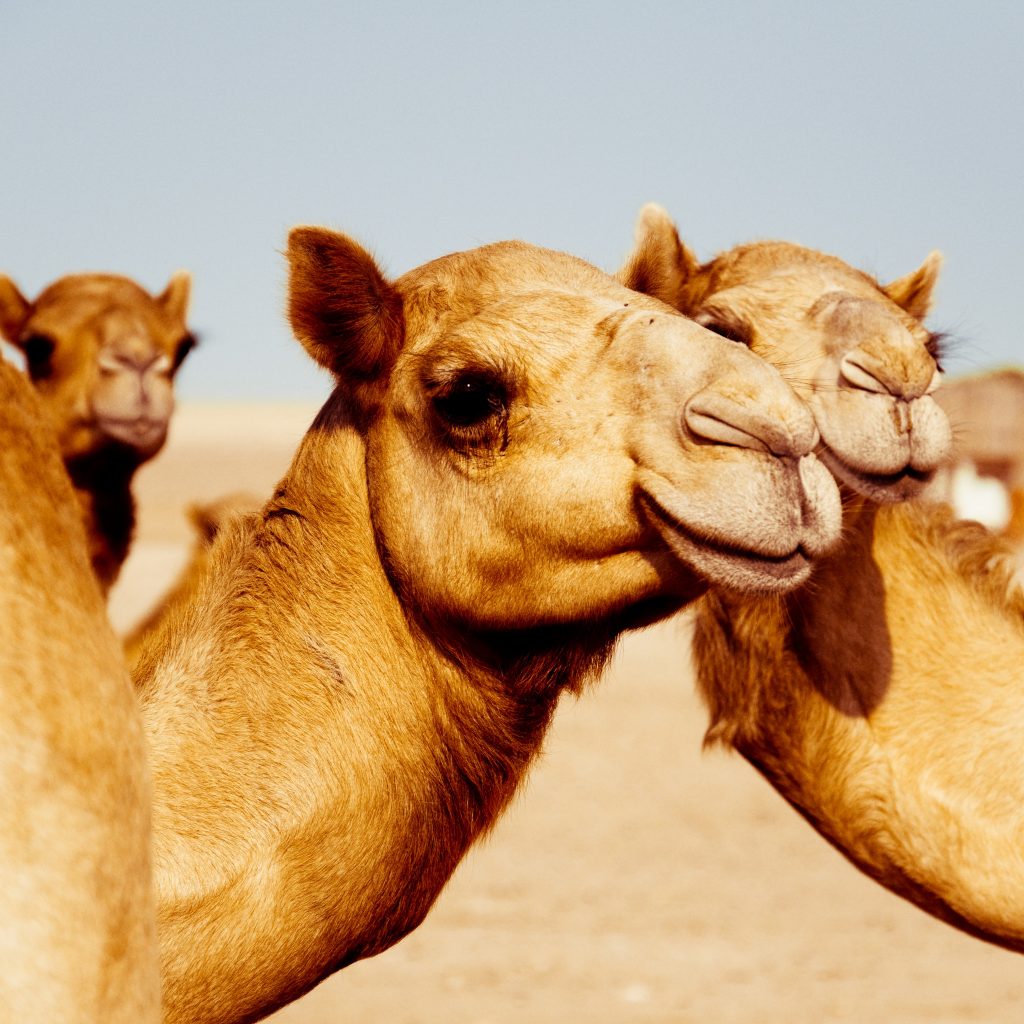Camels are camelids, members of the biological family Camelidae, the only living family in the suborder Tylopoda. Camels tend to be large and are strictly herbivorous. Camels differ from ruminants in several ways.
A fully grown adult camel stands 1.85 metres (6 feet) at the shoulder and 2.15 metres (7 feet) at the hump. Camels can run up to 65 kilometres per hour (40 miles per hour) in short bursts and sustain speeds of up to 40 kilometres per hour (25 miles per hour). The average life span of a camel is 30 to 60 years.
The kidneys of a camel are very efficient. Urine comes out as a thick syrup and their faeces are so dry that it can fuel fires.

Camels are able to withstand changes in body temperature and water content that would kill most other animals. Their temperature ranges from 34°C (93°F) at night up to 41°C (106°F) in the day and only above this threshold will they begin to sweat. This allows them to preserve about five litres of water a day. Camels can withstand at least 25% weight loss due to sweating.
A camels mouth is very sturdy and they are able to chew thorny desert plants. Long eyelashes and ear hairs, together with closeable nostrils, form an effective barrier against sand. Camels pace (moving both legs on one side at the same time) and their widened feet help them move without sinking into the sand.














